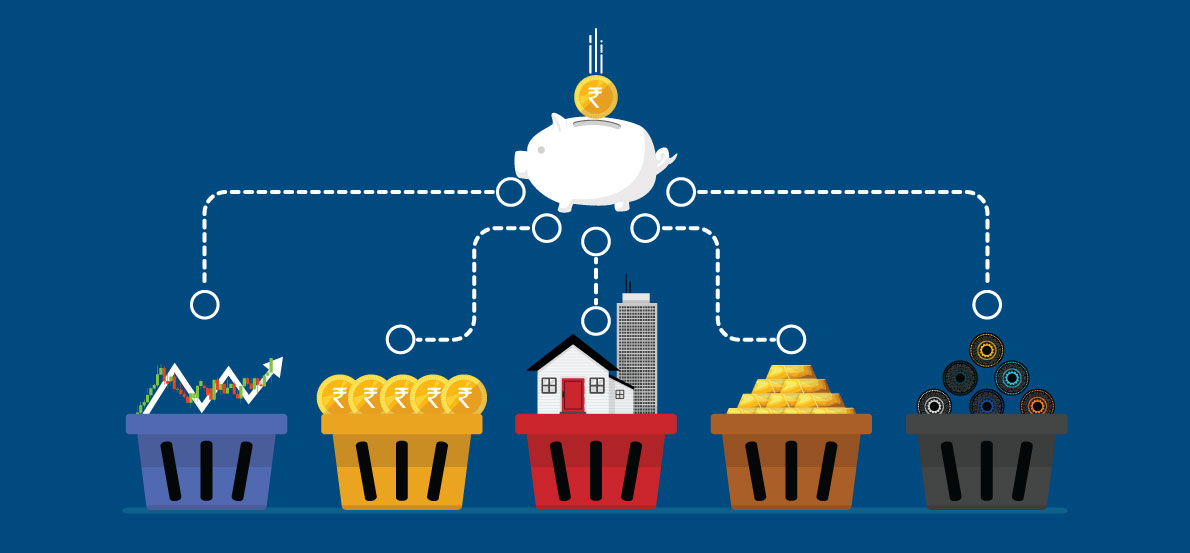All you wanted to know about ELSS
Equity Linked Saving Scheme popularly known as ELSS is an equity oriented mutual fund scheme. It has been steadily gaining traction among investors. Given its wide spread acceptance let us consider the various facets of this tax saving product in detail.
How ELSS differs from other equity oriented schemes
The major difference between ELSS and any other equity oriented scheme are as follows:
1. ELSS is eligible for tax benefit under Section 80 C. This benefit is not available for investments made in other equity oriented schemes.
2. Generally, equity oriented schemes do not have any lock-in period except that you may have to pay an exit load if you redeem your investment before prescribed time period but ELSS investments come with a three years lock in.
TAX BENEFITS AVAILABLE
Under Section 80 C of Income Tax Act an HUF or an individual whether a resident or a non-resident, can claim deduction upto Rs. 1.5 lakh every year for investments made in ELSS along with other eligible items like life insurance premium, home loan repayment, children’s tuition fee, EPF and PPF contribution etc.
HOW LIQUID IS THE INVESTMENT
Unlike other equity schemes, ELSS comes with a three-year lock-in period during which an investor is not allowed to redeem one’s ELSS investment. As a result, fund managers can take long term call on investments as there is not much scope for a churn upto three years. However, once the lock in period is over, there is no compulsion to redeem that investment and you can continue with your investment as long as you want. So, from a liquidity perspective, during the lock-in period, the investment is illiquid but post that investors are free to redeem whenever they want making this option very liquid. In case of death of the taxpayer, there is an exception to the three-year lock in period. The nominee or legal heir of the investor can withdraw the investment any time after his death but not before one year from the date of allotment of units.
WHY TO INVEST
ELSS funds invest in equities, so they aim to deliver market linked returns. I believe looking at a 10-year data for a volatile asset class like equity will provide the true picture to assess its true efficacy. This make ELSS a promising investment for tax payers.
Among the various asset classes, it is a known fact that equity is the only asset class which offers you the opportunity to create potential wealth in the long run. Since ELSS invests minimum of 80% of its corpus in equities, ELSS has a reasonably higher chance of delivering outsized returns when compared to other options. In effect, ELSS aids in reducing the tax outgo while generating higher returns, making it a better tool for long term wealth creation. It is like eating the cake and having it too.
WHO SHOULD INVEST
ELSS being an equity product could be volatile in the short term. So, it may happen that at the end of the lock-in period of three years, if equity market is going through a downside or a sideways movement, one may have to remain invested for more than three years.
So, ideally a person with long term investment horizon should invest in ELSS. Given the long holding time, ELSS is well suited for an individual who is relatively young and has a longer timeframe to achieve his financial goals. I do not mean to say that you will not get good returns during the three years’ period but ideally you should remain invested for long term. So, opt for ELSS if you certainly do not need the invested amount in short term.
HOW TO INVEST
One can invest in ELSS either in a staggered manner or consider lump sum. Considering the volatility in the markets and ELSS being market linked product, SIP is a better way to invest, save tax and create wealth over long term. Ideally, there is no right time to invest in equities through SIP and one can start as and when required. The optimal approach is to invest in staggered manner through Systematic Investment Plan (SIP) or Systematic Transfer Plan (STP). You can automate your investments through these options. Ideally, an investor should spread the ELSS investment to be made under Section 80C, over a 12-month period at the beginning of the year instead of cramming the entire investment in February or March alone.
HOW ARE PROFITS TAXED
Your investment in ELSS is treated as an investment in equity oriented scheme and hence is eligible for concessional treatment for tax purposes. Investment in any equity oriented scheme becomes long term capital asset after 12 months of holding. Since your investments in ELSS has a lock in of three years the investment by default becomes a long term capital asset.
As per Section 112A of the Income Tax Act, the profits on listed shares and equity oriented schemes taken together are taxed at zero rate of tax upto Rs. 1 lakh of profits. This makes the initial lakh of profits on listed shares and all equity oriented schemes taken together (including ELSS tax-free) and the balance is taxed at a flat rate of 10%. It is important to note that no indexation benefit is available on long term capital gains on such equity products. Since dividends are taxed at your regular slab rates, remember to opt for growth option to minimise your tax outgo.
In case you have invested through SIP, then each of your SIP instalment is treated as a fresh investment. Hence, the lock-in period is determined with respect to each of the SIP instalment. The profits are computed by multiplying the units allotted in each SIP instalment by difference in NAV for purchase and redemption.
Please note that all long term capital gains including the initial tax free Rs. 1 lakh is taken into account while determining your eligibility for threshold of Rs. 5 lakhs for rebate under Section 87A. Moreover, this rebate is not available in respect of tax payable on long term capital gains on such equity products even if you are otherwise eligible to avail rebate under Section 87A.
In case of ELSS investments made prior to 31st January, 2018, any profits made till that date is grandfathered and is tax-free in your hands. In such a case, Net Asset Value (NAV) as on 31st January, 2018, is to be taken as your cost for computing long term capital gains. Since no tax is payable on initial of long term capital gains on all equity products Rs. 1 lakh on, one should book a minimum of Rs. 1 lakh long term capital gains every year to minimise overall tax incidence on your equity investments.
Author-Balwant Jain
(As published in IPRU Insights)
![]()
![]()
![]()
![]()






















